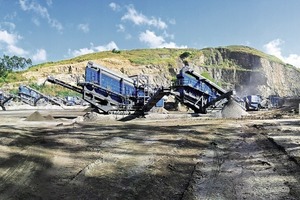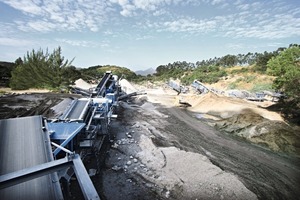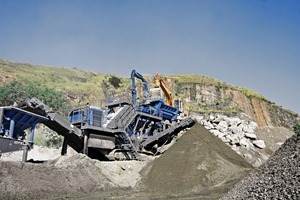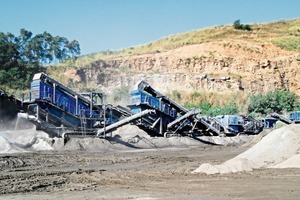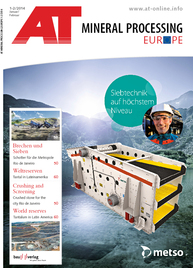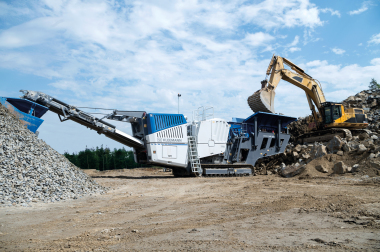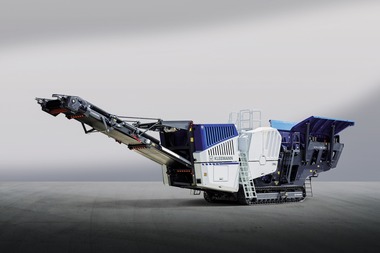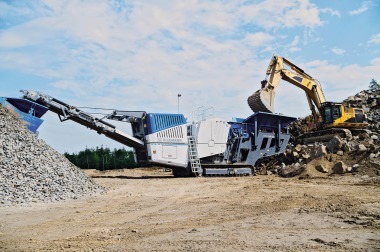Crushed stone for the city from Kleemann mobile plants
Gneiss for the World Cup and Olympic Games is being processed in a large crushed stone plant with the aid of Kleemann mobile crushers. No less than two of the world’s biggest sporting events – the FIFA World Cup and the Olympic Games – will be hosted in Rio de Janeiro in the next three years. Such mega-events often involve immense infrastructure projects, such as that of the Brazilian company Tamoio Mineração. Tamoio could be said to be right slap-bang in the middle, just a few kilometers from the centre of Rio de Janeiro and the sports arenas. What’s more, the company is the mega-city’s only supplier of crushed stone. To meet the growing demand for aggregates for road construction, the company decided to significantly enlarge its aggregate production capacity. The task was daunting: the new plant had to produce 900 t/h in grain sizes ranging from 0 to 32 mm (Fig. 1), making a grand total of 2 500 000 t/y.
Such project requirements rapidly conjure up visions of a stationary processing plant. “In this case, there were several reasons in favour of a mobile solution. For one thing, the plant had to be commissioned as soon as possible. For another, it was important that the plant set-up could be flexibly positioned in the quarry in order to remain as close to the point of extraction at all times and thus minimize the costs and material handling times,” explains Luiz Zoch, Kleemann Area Sales Manager Latin America. The plants’ resale value was another factor, for each can also be used individually. Before making a purchase decision the production processes of several competitors have been looked at very close and detailed.
With the process engineering expertise in the field of mobile plant combinations and consistent diesel-electric power systems in the quarry, Kleemann was able to offer exactly the right combination. Kleemann also scored points for service, providing extensive support from the factory during the project planning phase. Kleemann finally won the day with the strong local presence of Wirtgen Brasil, which assured the ongoing after-sales service. In the end, Tamoio Mineração opted for two plant combinations (Fig. 2) with almost identical set-ups. “Our rate of production is enormous, due also to the plants’ mobility. That means that we can respond flexibly to all required changes,” says Tamoio Mineração’s Vice President Orlando Ribeiro.
In the first crushing stage, two large jaw crushers perform the preliminary crushing. One is a Mobicat MC 140 Z (Fig. 3) with a crusher inlet of 1400 x 1130 mm, the other a Mobicat MC 120 Z with a crusher inlet of 1200 x 800 mm. These two then directly feed the two downstream plant combinations simultaneously. The subsequent plant combinations are identical; in the second crushing stage, they comprise two mobile cone crushers of type Mobicone MCO 13 which reduce the material from approx. 280 mm to a size of between 0 and 90 mm. In the third crushing stage, two further mobile cone crushers of type Mobicone MCO 13 S with integrated triple-deck screening units discharge the first end-product with a grain size of 22 to 32 mm. Final screening is then undertaken by two mobile triple-deck screening units of type Mobiscreen MS 23 D (Fig. 4). With screen sizes of 8000 x 2300 mm, each of the two screening units has sufficient performance reserves to reliably discharge the roughly 400 t required per hour and plant in the four other final grain sizes which are below 22 mm.

